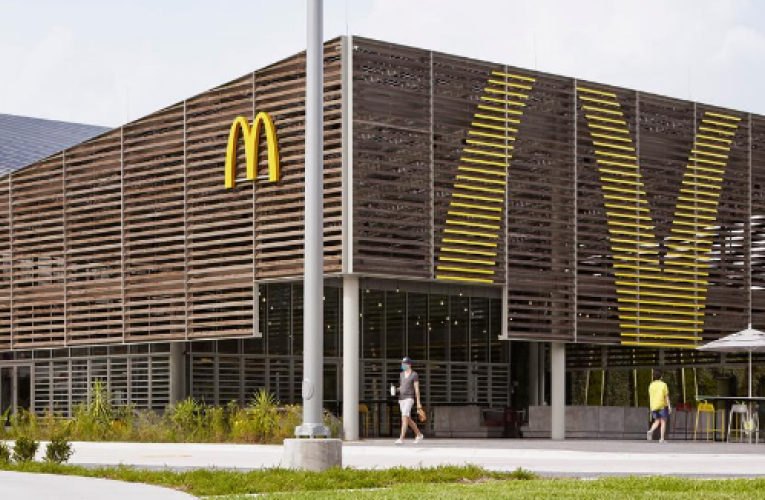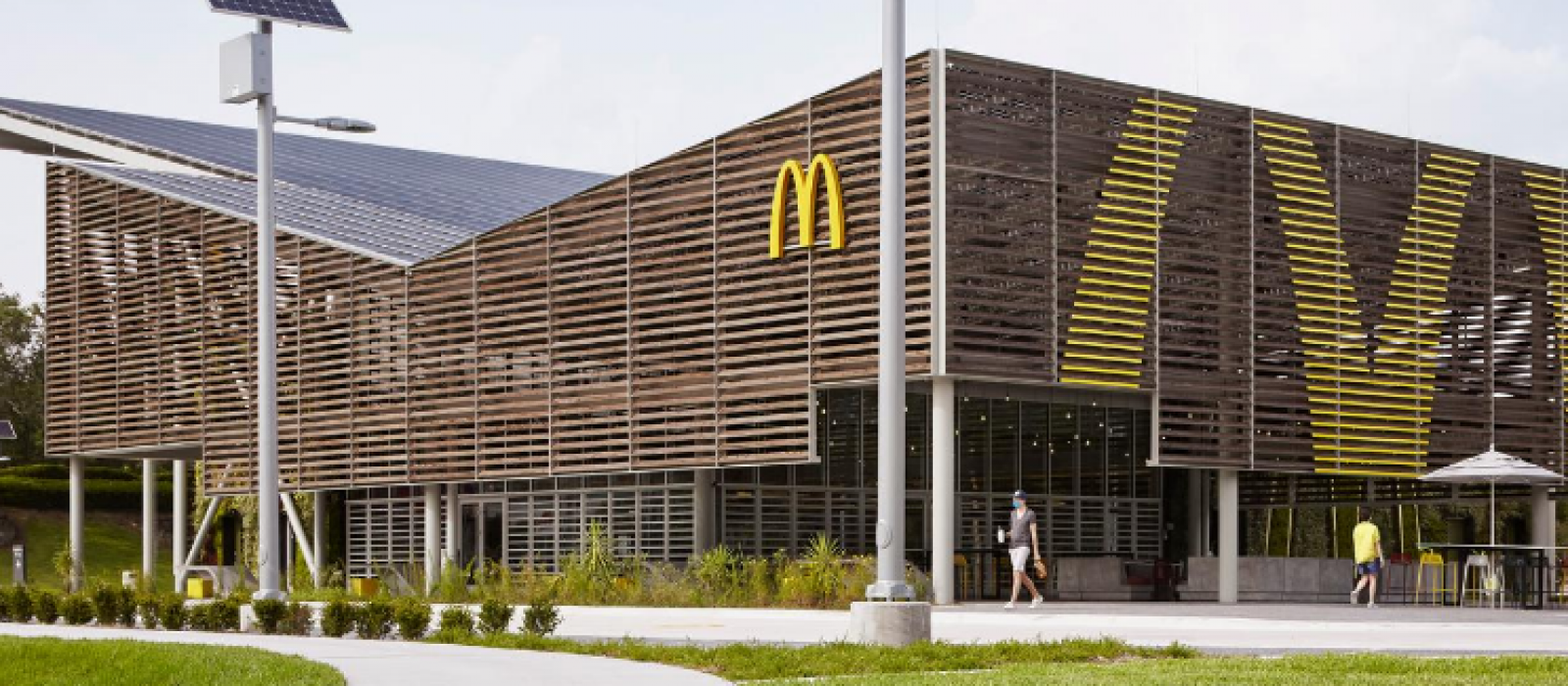We realized that if a quick-service restaurant can achieve net-zero energy, then all buildings and industries could achieve that kind of win, too."
–Lane Wallace, MEM'14
PHOTO (L to R): Maria Ramirez Millan, Emily Conner and Lane Wallace
“McDonald’s is one of the world’s most recognizable brands and their time-tested business model has survived decades of competition—if they’re moving toward more sustainable design, it’s a sure bet that other companies will, too,” she said. “Our project only scratched the surface, so it’s very exciting to see where the McDonald’s team took it with their hard work.”
“Working with Emily, Lane, and Maria was a critical moment in this project because their feasibility report allowed our teams a unique opportunity to think beyond what ‘was’ and focus on what could be,” said Steve DePalo, director of North American sustainability at the fast-food giant.
Lessons learned from the new restaurant will inform McDonald’s global efforts to reduce greenhouse gas emissions at all its restaurants and offices by 36% by 2030, he said. “This net-zero-energy-designed global flagship restaurant represents…a key milestone on our journey to identify meaningful solutions to climate change.”
Tim Johnson, associate dean of professional programs at the Nicholas School and chair of the MEM concentration in Energy and Environment, said, "It is always so fulfilling to see the Nicholas School Master's Projects having visible, real-world impact on industries’ and communities’ approaches to energy and environmental issues.
“Emily, Maria, and Lane deserve all the credit for an analysis that was easily on par with professional work,” he said.
Conner, now an energy manager at the Federal Bureau of Investigation, appreciates the praise, but respectfully disagrees about the credit – some of which, she says, belongs to the rigorous academics and the real-world focus of energy programs at Duke.
“Our team’s experience studying energy at Duke—both within the Nicholas School’s MEM program and through Duke’s interdisciplinary community of energy students and faculty—really prepared us to be resourceful and creative in approaching this problem,” she said.
Taking advantage of the opportunities offered through the Duke Energy Initiative is key advice she offers to any current or future Nicholas School students who’d like to work in energy.
“Whether you’re an undergraduate or a grad student, get connected with the Energy Initiative. Take advantage of all the ways they can help you engage with professionals who work on energy, climate, and sustainability issues. Say yes to real-world research projects, then bring all your drive and creativity and skills to the table,” Conner said. “You may be ‘just a student’ but you never know what the impact could be—for your career and for the world.”
Due to COVID-19 safety precautions, the new McDonald’s at Disney World is only open for drive-through and delivery service at this time.
Note: This story is based on a news article that first appeared on the Duke Energy Initiative website.
Read more stories featured in the Duke Environment Magazine Fall 2020 issue.





